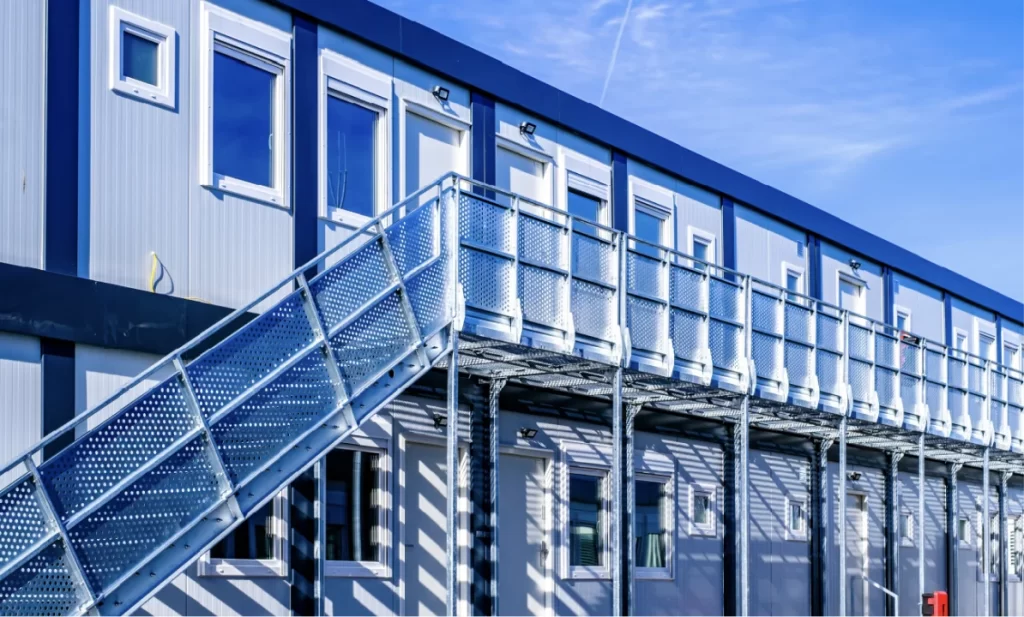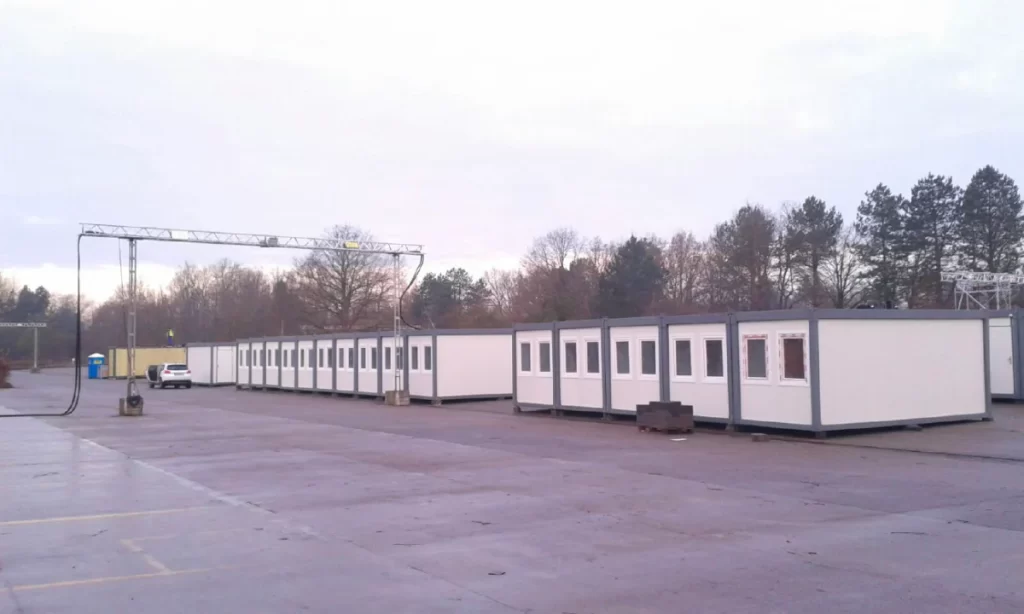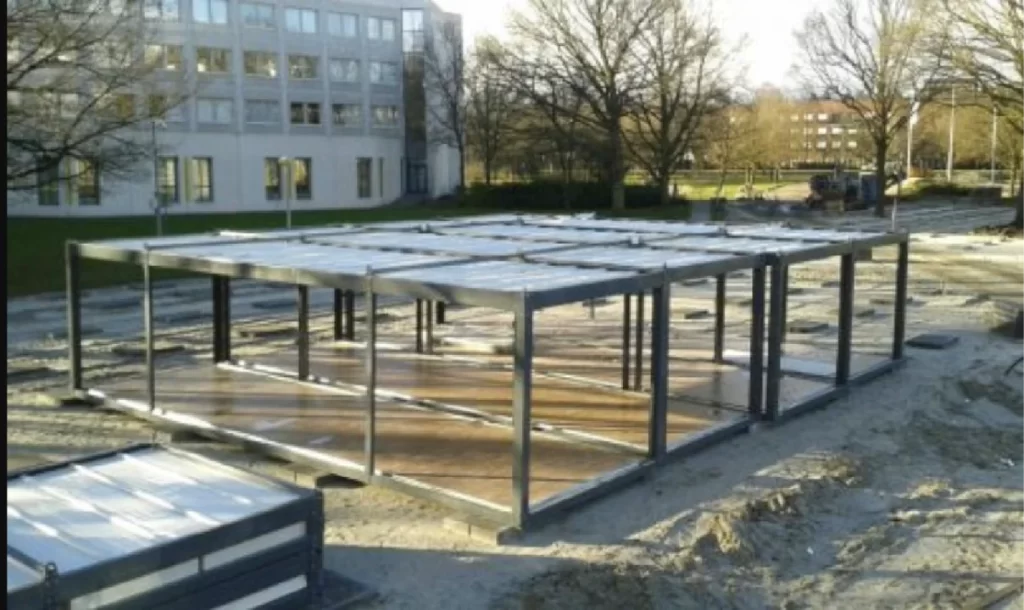MODULAR SCHOOL BUILDINGS
Access to quality and safe education is every child’s right and every family’s primary desire. In the face of increasing population and expanding educational needs, modern construction technologies offer innovative solutions to meet this demand. Modular school buildings are at the forefront of these solutions and play a critical role in shaping the learning environments of the future. Modular school buildings ensure that school needs are quickly met through their easy and practical installation, especially in disaster areas where there is a rapid need for education. These buildings, which can be produced in different features and capacities, can thus correctly meet expectations according to changing numbers of students and teachers.
Modular school buildings are also among the ideal solutions for providing education in all seasons, thanks to their durable structures. When evaluated in this respect, modular school buildings are more preferred because they are comfortable for students and teachers, durable, hygienic, and much more suitable compared to traditional structures.




The Role of Modular Structures in Education
The growing population increases the need for physical infrastructure in schools every day. Traditional construction methods may be inadequate in meeting increasing demand and can be completed with high costs over long periods. At this point, modular school structures stand out as an effective alternative by providing advantages in terms of both time and cost. These structures perfectly adapt to modern educational needs with their rapid production processes and flexible design possibilities. Modular structures, which are produced from pre-galvanized material in a factory environment and assembled at the school site, thus enable education to begin as soon as possible with their quick installation times.
Since modular structures are customizable, many areas such as activity areas, cafeterias, and teachers’ rooms within the school can also be easily provided depending on demand.
EMERGENCY SHELTERS

KAHRAMANMARAŞ BAYKAR DISASTER CAMP
After the earthquake on February 6th, a total of 220 container emergency living units were installed in Kahramanmaraş through BAYKAR.

HATAY DISASTER CAMP, TURKEY
Following the earthquake on February 6th, a total of 850 container emergency living units were installed in various regions of Hatay through various aid organizations, chambers of commerce, and representatives of the private sector.

PORTO RICO - EMERGENCY LIVING UNITS
APEC Smart Steel Building Systems were preferred to supply the necessary living units for refugees to be resettled in Porto Rico.
REFUGEE CAMPS

HAMBURG REFUGEE CAMP, GERMANY
A total of 1,100 living units were built for refugees to be resettled in Hamburg, Germany. The project, including dormitories, toilets, showers, and dining areas, was completed and put into use within 60 days according to Eurocode and German DIN standards.

WALLDORF REFUGEE CAMP, GERMANY
A total of 121 living units were built for refugees to be resettled in Walldorf, Germany. The project, including dormitories, toilets, showers, and dining areas, was completed and put into use within 30 days according to Eurocode and German DIN standards.

HOLLAND CAMP
A total of 128 living units were built for refugees to be resettled in Holland. The project, including dormitories, toilets, showers, and dining areas, was completed and put into use within 30 days according to Eurocode and DIN standards.
Advantages of Modular School Educational Buildings
Modern modular classrooms are equipped with quite advanced technologies compared to simple portable structures used in the past. Modular school educational buildings are constructed as permanent structures and offer a world-class educational environment. These structures, produced with advanced technology, have features such as high sound insulation, energy efficiency, and durability. These qualities create an environment that increases students’ focus and supports the learning process. Additionally, thanks to design flexibility, classrooms can be customized according to different educational needs.
Modular educational building solutions not only provide suitable learning environments for students but also bring an environmentally conscious approach. Since most of the production processes take place in the factory, waste is minimized, and environmental impacts at the construction site are kept to a minimum. This provides a great advantage in terms of sustainability.




Why Are Modular School Buildings Preferred?
Infrastructure investments in the education sector heavily utilize modular solutions while designing future learning environments. Modular school building options, which are completed faster and reduce costs compared to traditional building projects, allow schools to rapidly increase their capacity. These buildings stand out with their applicability in both large cities and rural areas. Whether it’s a small school with a few classrooms in a town or a huge campus in big cities, modular structures offer an effective solution at any scale.






Modern Modular Classrooms Offer Customizable Solutions
There is a big difference between portable classrooms used in the past and modern modular school buildings. Today’s modular classrooms have aesthetically modern designs and high technologies. These structures, equipped with features such as effective insulation against noise, window arrangements that optimize natural lighting, and energy-saving systems, provide an ideal educational environment for students. Moreover, thanks to their adaptable structures for different configurations, they easily adapt to growing and changing needs.
Modular school structures are among the most effective innovative solutions that respond to modern educational needs. These structures are increasingly being used in the education sector thanks to their rapid production processes, cost advantages, environmental sensitivity, and student-focused designs. It is expected that more schools will be equipped with these world-standard systems in the future. Modular structures, which provide a safe, comfortable, and efficient learning environment for students, will continue to take the quality of education to the next level.

